What Does the Reduced Engine Power Warning Light Mean & How Do You Fix It?
Generally warning lights are passive and simply illuminate to warn of a problem but sometimes a warning light will accompany a forced change in how the vehicle runs. One such light is the "Reduced Engine Power" warning.
In this article we will be looking more closely at the reduced engine power light to find out what it means, what it does and how to potentially fix the problems it may be indicating. This is one warning light that we literally have no choice but to take notice of.
What Does The Reduced Engine Power Warning Mean?
When you receive the engine power reduced warning on your dashboard it is because the car has chosen to limit performance. Essentially the Power Control Module (PCM) has detected a system failure and logs a trouble code.
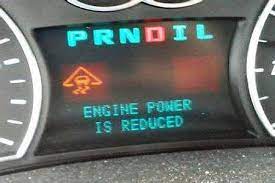
While logging this code and illuminating the light the car's computer will take steps to decrease the power of the engine. This will usually lead to a noticeable difference in the way it operates. You might find the vehicle will not shift gears or it may even stop completely.
This is considered by many to be a fail-safe mode which allows you to protect your engine from further harm. It is also referred to as limp mode as it may restrict engine performance in order to allow you to safely get a struggling vehicle somewhere for repairs.
What Causes the Reduced Engine Power Warning?
There are a number of possible issues that may lead to the activation of reduced engine power warnings and it can sometimes be hard to know what is actually going wrong. A good tool for any home mechanic would be an OBD2 scanner which can be used to help you diagnose your car's problems.
Using the scanner tool you can connect to the car's computer and gain access to the trouble codes that caused you to receive the reduced engine power warning. With the help of your owner's manual you can find out what these codes mean with regards to your specific car model.
If you can diagnose the issue in this way it may help you avoid mistakenly replacing good parts or repeating repairs because you missed something. In the following section we will mention a few of the more common reasons you might get this warning light.
Loose Connections
Cars move a lot and vibrations are happening constantly while we are driving so it is little wonder that sometimes wires may become loose. If you also factor in the possibility of moisture getting at wires as well you might not be surprised that wiring issues are quite common.
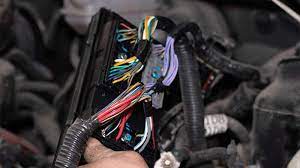
As our cars get increasingly more high tech we have more and more wires involved to the point that all of our major components have some form of wiring involved. Ultimately this will mean that if a wire becomes loose or damaged we are going to get a trouble code.
These are often not too difficult to repair but it is sometimes tricky to locate the offending wire. This will likely require a full inspection of the systems to find the problem wire which could mean a costly repair unless you have the required electrical knowledge.
Transmission Failure
It can be a little rarer for a transmission problem to be the cause of a reduced engine power warning; it is not impossible. This is because the two systems are very closely connected and an issue with the transmission could adversely impact the engine.
Simply mentioning transmission issues can fill you with dread when you consider how costly some of the repairs can be. Generally speaking if you have a slipping transmission or are low on transmission fluid you could very easily get trouble codes and as a result the reduced engine power warning.
O2 Sensors
Oxygen level sensors more commonly known as O2 sensors are located on the vehicle's exhaust usually after the catalytic converter but sometimes before it as well. These sensors read the amount of oxygen coming out of the exhaust and will alter the air/fuel mixture to balance engine performance.
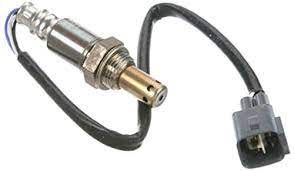
If your O2 sensor is faulty this can lead to incorrect readings and as a result the wrong air/fuel mixture. This will affect performance of the engine and if it becomes too imbalanced you will get the reduced engine power warning and engine functions will be limited to protect it from further damage.
Clogged Catalytic Converter
The catalytic converter filters the engine's emissions to turn harmful gases into less harmful ones. It does this by using a filter system coated in catalysts to create chemical reactions. These filters can become clogged and if this happens then the car's emissions are not escaping as quickly as they should.
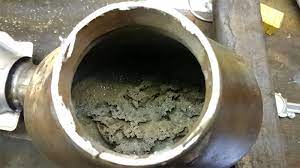
With a clogged catalytic convertor the emissions will back up in the engine causing back pressure and a dip in performance. Usually you will get a Check Engine light with this issue but in extreme cases you may also get the reduced engine power warning as well.
Throttle Body
This part contains a butterfly shaped valve which is responsible for regulating air flow into the engine. This means that if the valve is faulty it may let too little or too much air into the system which can throw the air/fuel mixture out of balance.
As we have already mentioned when the air/fuel mixture is unbalanced this will cause performance issues and may result in a reduced engine power warning. If there is not enough due to carbon deposits on the valve then the engine may misfire.
Additionally the throttle position sensor must also be in good working order to help maintain the air levels in the engine. This sensor detects the pressure we exert on the gas pedal and should send a message to open up the throttle to draw in more air when we are trying to accelerate.
MAF Failure
The Mass Airflow (MAF) Sensor is located between the intake manifold and the engine air filter. This too is involved in allowing air to flow freely through the engine. Once it determines the air pressure in the engine it will make adjustments based on these measurements.
The result of a failed MAF sensor would likely be an unbalanced air/fuel mix, rough engine operation and ultimately a possible reduced engine power warning. The warning light is triggered because the car's electronic control unit detects that the readings from the MAF are incorrect.
ECU Problem
The sensors in your car report their data to the Electronic Control Unit (ECU) which is essentially your car's brain. Using the data from sensors this unit sends out commands around the car to make alterations with the purpose of improving performance.
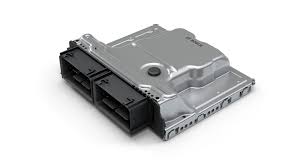
We might assume that an imbalance is the fault of a sensor but sometimes the ECU itself can become damaged or broken. If the ECU fails then sensor information is not processed correctly and you can end up with a very poorly running vehicle as a result.
How Do You Fix a Reduced Engine Power Warning?
There are potentially a lot of possible causes of a reduced engine power warning so the first thing you will need to do is figure out what has gone wrong. As mentioned an OBD2 scanner tool can be great for this and may tell you very quickly where the issue is located.
Once you find the trouble codes and decipher them with a list of codes for your specific car model you will know what needs to be done to fix the problem. Some of these may be easy and inexpensive repairs that you can try and tackle yourself. Others however may need a professional and could cost you a good few dollars to set right.
How Much Does It Cost to Repair a Reduced Engine Power Issue?
With so many potential problems it is hard to say exactly how much it will cost but it could range between a little personal labor and no cost up to a mechanic's bill of more than $2,500. It all depends on what is wrong and if it is only one issue or multiple.
A loose wire for example that you can locate and retighten will cost you nothing but a little bit of your time. Swapping out parts such as catalytic converters and ECUs is going to cost more and you may be looking at a repair that is more than the value of the car itself.
Can You Drive With a Reduced Engine Power Warning?
This very much depends on what the issue is because a serious problem may restrict your fuel flow and essentially stop you from running the engine. In this case you have no choice but to get the problem fixed because it will not run if you do not.
In limp mode your engine performance will decrease but you can drive it for a little while. Any driving however should ideally be limited to your home to a mechanic. The reduced engine power warning is no joke and you really should not push your luck.
Conclusion
The reduced engine power warning is not just a warning but a mode that your engine can put itself in to protect itself from a detected fault. This is generally associated with a serious issue and may even immobilize your car completely to stop you doing further damage.
You should never ignore this particular warning light and as mentioned sometimes you have no choice. There can be a number of issues at fault in this situation so your first step will need to be diagnosing the problem.
Link To or Reference This Page
We spend a lot of time collecting, cleaning, merging, and formatting the data that is shown on the site to be as useful to you as possible.
If you found the data or information on this page useful in your research, please use the tool below to properly cite or reference Tow Ratings as the source. We appreciate your support!
-
<a href="http://towratings.net/blog/what-does-the-reduced-engine-power-warning-light-mean-how-do-you-fix-it/">What Does the Reduced Engine Power Warning Light Mean & How Do You Fix It?</a>
-
"What Does the Reduced Engine Power Warning Light Mean & How Do You Fix It?". Tow Ratings. Accessed on April 25, 2024. http://towratings.net/blog/what-does-the-reduced-engine-power-warning-light-mean-how-do-you-fix-it/.
-
"What Does the Reduced Engine Power Warning Light Mean & How Do You Fix It?". Tow Ratings, http://towratings.net/blog/what-does-the-reduced-engine-power-warning-light-mean-how-do-you-fix-it/. Accessed 25 April, 2024
-
What Does the Reduced Engine Power Warning Light Mean & How Do You Fix It?. Tow Ratings. Retrieved from http://towratings.net/blog/what-does-the-reduced-engine-power-warning-light-mean-how-do-you-fix-it/.